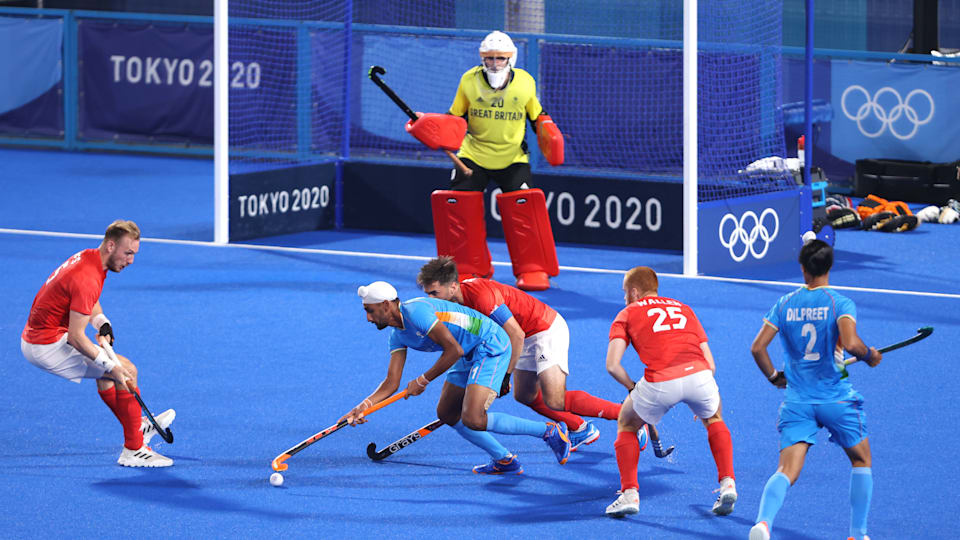
Hockey players spend a significant amount of time off the ice focusing on improving their strength, agility, endurance, and overall conditioning to perform at their highest level during the season. While on-ice practices are crucial for skill development and game strategy, off-ice training is equally important in preparing players physically and mentally for the demands of the sport. Here’s a breakdown of how hockey players train when they are off the ice:
Strength Training
Building strength is vital for hockey players, as the sport requires explosive power, stability, and the ability to withstand physical contact. Off-ice strength training typically involves: slot bisa depo 5000
Weightlifting: A combination of compound exercises such as squats, deadlifts, bench presses, and pull-ups helps improve overall strength. These exercises target key muscle groups that are used during hockey movements like skating, checking, and shooting.
Core Work: The core is essential for balance, power, and stability. Players incorporate exercises like planks, Russian twists, and medicine ball throws to strengthen their core muscles, which helps them maintain control on the ice.
Leg Strength: Since skating is so reliant on lower body strength, hockey players often focus on exercises like lunges, leg presses, and plyometric movements to enhance their explosiveness and agility on the ice.
Cardio and Endurance Training
Hockey is an intensely fast-paced game that demands high cardiovascular endurance. Off-ice conditioning routines aim to improve a player’s stamina, enabling them to sustain energy throughout a game.
HIIT (High-Intensity Interval Training): HIIT is commonly used to simulate the quick bursts of speed and intense activity during a game. These workouts combine short periods of all-out effort followed by a brief rest, mimicking the stop-and-start nature of hockey.
Running and Cycling: Long-distance running or cycling is used to build aerobic endurance. Players may do steady-state cardio on off days to maintain their overall fitness level.
Agility Drills: Ladder drills, cone drills, and sprints are great for enhancing agility. These exercises mimic the quick direction changes and lateral movements needed on the ice.
Plyometrics
Plyometric exercises are designed to increase explosive power, which is crucial for quick starts, sprints, and jumps on the ice. These exercises typically involve movements that rapidly stretch and contract muscles, improving both speed and strength.
Box Jumps: Jumping onto a platform helps enhance lower body power.
Broad Jumps: This exercise increases explosiveness, mimicking the push-off motion used in skating.
Jumping Lunges: A great way to build strength and agility in the legs while improving coordination and balance.
Flexibility and Mobility Work
Maintaining flexibility is essential for preventing injuries and ensuring smooth, fluid movements. Hockey players often incorporate mobility exercises to ensure they maintain a wide range of motion in their joints and muscles.
Dynamic Stretching: Before workouts or games, players perform dynamic stretches such as leg swings, arm circles, and walking lunges to loosen up their muscles and prepare their bodies for intense activity.
Yoga and Pilates: Many players participate in yoga or Pilates to enhance flexibility, improve posture, and strengthen stabilizing muscles. These disciplines can also promote recovery and mental focus.
Foam Rolling: Self-myofascial release techniques like foam rolling help reduce muscle tightness, improve circulation, and alleviate muscle soreness after training.
Stickhandling and Shooting Practice
While players can’t always be on the ice, they still need to maintain and improve their puck-handling and shooting skills. Off-ice training for these skills includes:
Stickhandling Balls or Pucks: Players use special training tools like balls or weighted pucks to practice stickhandling in tight spaces. These tools help develop better hand-eye coordination, puck control, and quickness with the stick.
Shooting on Targets: To work on their shooting accuracy and technique, players often use a shooting pad, a target system, or even shoot into nets with specific target zones. This helps them fine-tune their shooting mechanics and become more precise on the ice.
Mental Training
Off-ice training isn’t just about physical fitness—mental preparation is just as critical for success in hockey.
Visualization: Hockey players often engage in visualization techniques, imagining themselves in game situations, taking shots, or making critical plays. This helps build confidence and prepares their minds for actual gameplay.
Focus and Mindfulness: Practices like meditation and mindfulness help players manage stress, stay focused, and improve their mental resilience during games. Mental toughness is key for overcoming challenges on and off the ice.
Nutrition and Recovery
Hockey players recognize the importance of proper nutrition and recovery to ensure they remain at their peak performance level throughout the season.
Diet and Hydration: Players focus on fueling their bodies with a balanced diet that includes protein, healthy fats, and complex carbohydrates. They also prioritize staying hydrated, as dehydration can lead to fatigue and performance dips.
Sleep and Recovery: Adequate rest is crucial for recovery. Players follow a regimented sleep schedule and may incorporate activities such as massage therapy, cold baths, or cryotherapy to reduce muscle soreness and aid in recovery.
Cross-Training
Many hockey players incorporate other sports or activities into their off-ice training to improve different aspects of their game.
Swimming: Low-impact but high-resistance, swimming provides an excellent full-body workout that enhances cardiovascular endurance without straining the joints.
Boxing or Martial Arts: These disciplines improve hand-eye coordination, upper body strength, and agility. Plus, they help players develop better footwork and balance, which are essential for quick turns and precise movements on the ice.
Conclusion
Off-ice training is a vital component of a hockey player’s development, as it enhances their on-ice performance, prevents injuries, and builds the physical and mental endurance needed for a long season. By combining strength training, cardio conditioning, flexibility exercises, mental preparation, and skill development, hockey players ensure they are at their best when they step back onto the ice. Whether through explosive power exercises, precision shooting drills, or cross-training activities, off-ice training is an essential tool that complements the on-ice experience and prepares athletes for success.